As IoT and enterprise connectivity become more entrenched in manufacturing environments, the vision of IT/OT convergence is becoming a reality.
There are great expectations in the manufacturing industry with respect to the convergence of IT and operational technology (OT). Simply put, the ultimate objectives are to break down the numerous silos of operational data on assembly lines and within entire manufacturing plants and then make that data available to be used by the enterprise applications on the IT side of the house.
What makes IT/OT convergence possible is the growing use of the Internet of Things (IoT) in manufacturing and the availability of enterprise connectivity. The IoT devices throughout a facility provided detailed health status data for each piece of equipment. The connectivity provides the conduit to aggregate that data for further use.
A simple example illustrates the way IT/OT convergence works and can help manufacturers enable modern capabilities. Take any piece of production equipment, say, an industrial mixer. For decades, the equipment would include a control panel to configure it, adjust its settings, and display different operating properties. If multiple mixers from the same OEM were installed in a single plant, they might be managed by a proprietary system from the OEM. Gathering information about the machine’s status and the issuing of controls would likely all be carried over a hard-wired network running a proprietary communications protocol.
All of that was typical of operational environments. Every OEM had its own control system, collected its own equipment’s data using its own communications protocol, and perhaps stored that data in a proprietary format. In other words, there were silos upon silos of information about the equipment on a production line or in a manufacturing plant.
Enter IoT and enterprise connectivity. Today, an industrial mixer is likely to include IoT devices to measure its operational health, making observations in real time. Add in enterprise connectivity within the plant, and those IoT devices can then easily communicate their data to a central console or application. And since the technologies are open, the IoT data from different OEMs and different equipment can all be easily gathered and stored together.
Benefits of IT/OT convergence
Once the data from OT systems throughout a manufacturing plant are available for IT apps to use, manufacturers can do many things.
At the simplest level, they can monitor equipment from a central location. In contrast, without the centralized IoT data, a person would need to walk up to every machine to read its operating information.
An additional benefit of bringing the IoT data back to one place is that a monitoring application could be set to trigger an alert when some operational parameter (e.g., the speed of a motor, the temperature of a mixer, etc.) exceeds a threshold value. That information could be an early indicator of a potential problem. A manufacturer might then send someone to the shop floor to inspect that piece of equipment.
That process could be made more sophisticated by applying analytics to the data with the goal of spotting anomalies. If it is detected that a health stat for a piece of equipment is out of normal operating range, that might be correlated with past events when the equipment failed. Such analysis can be the basis for a predictive maintenance program.
IT/OT convergence allows such efforts to be taken to an even higher level of sophistication. For example, insights into problems in the making can be tied to an ERP system checks to be sure that the parts required to repair the equipment are on hand, and if they are not, the system would automatically order them.
A final word on IT/OT convergence
As IoT and enterprise connectivity become more entrenched in manufacturing environments, the vision of IT/OT convergence can become a reality. Once that happens, there are numerous operational and business areas that can benefit from the insights derived from the collected IoT data.







